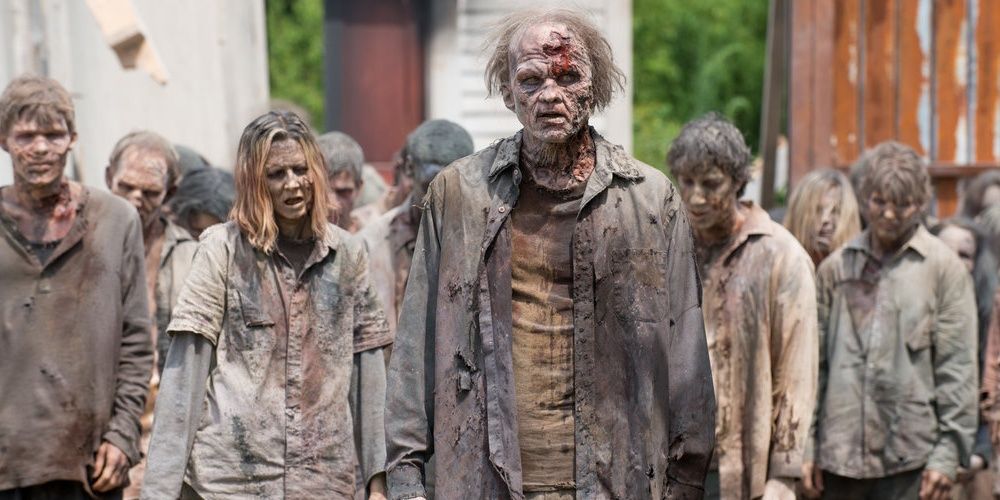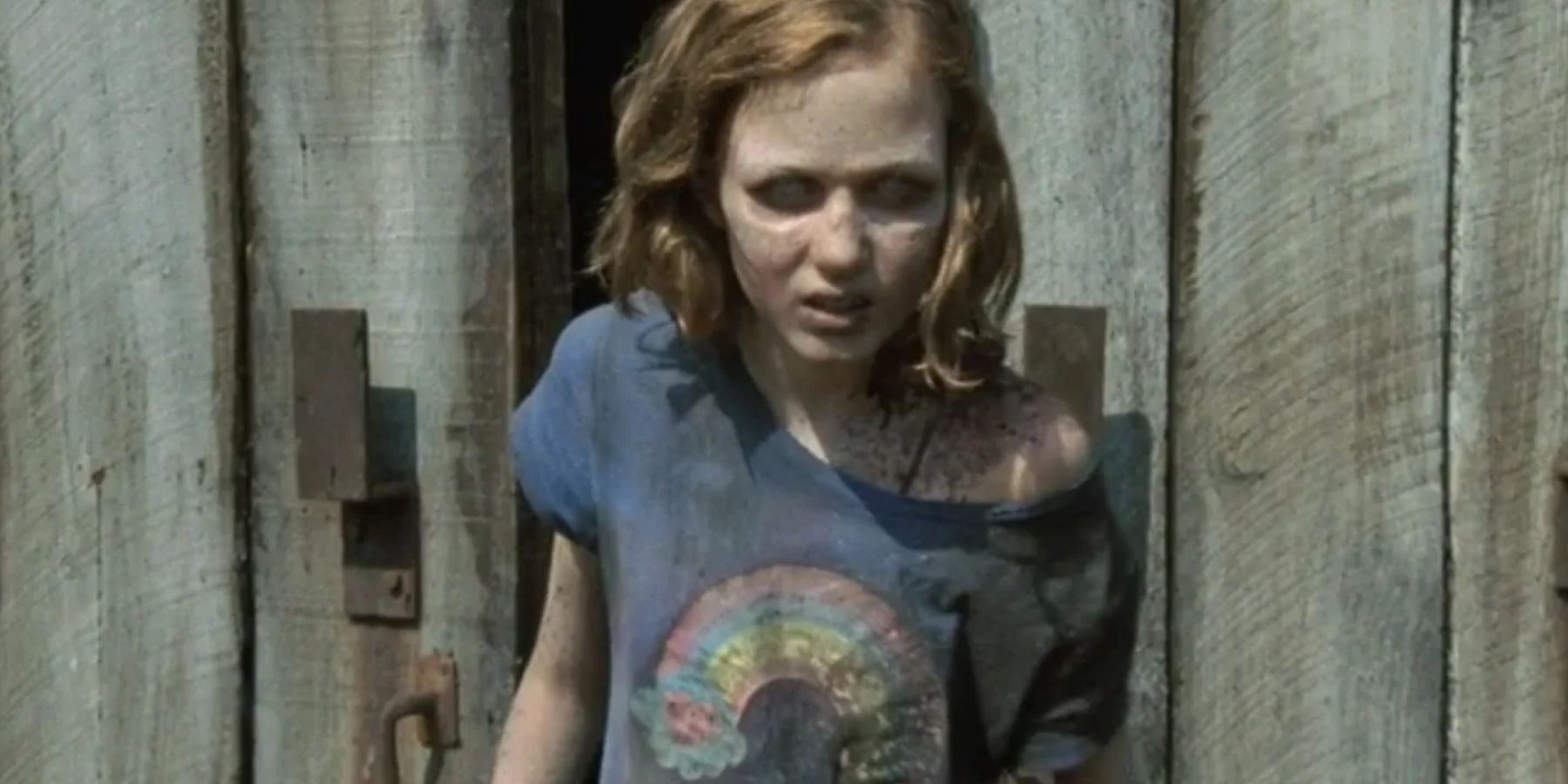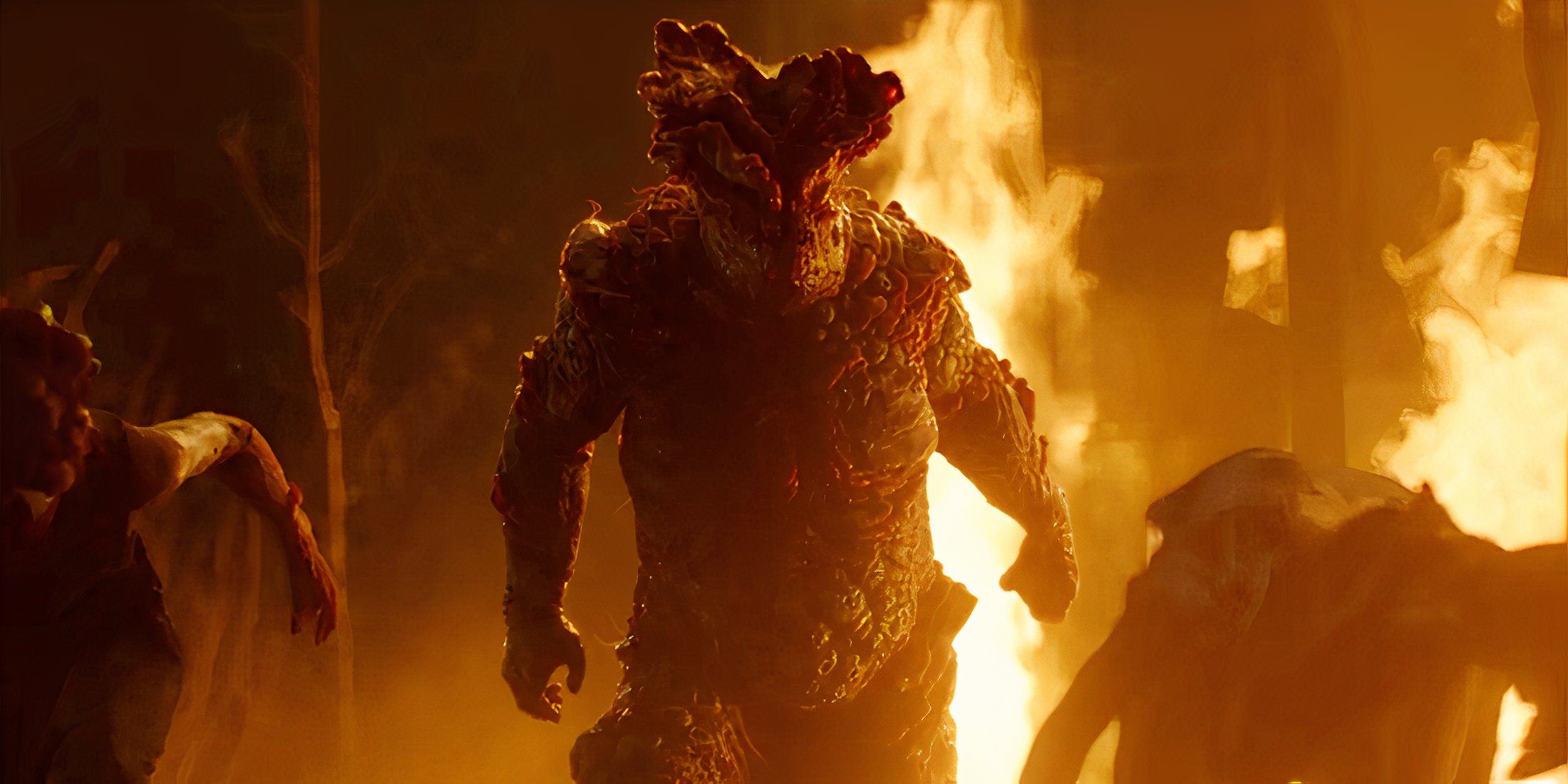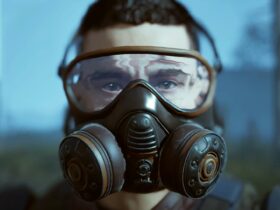Summary
- Walkers and Infected from The Walking Dead and The Last of Us differ in mechanics and lore.
- Walkers from TWD are slow but persistent, undead driven by hunger with heightened senses like smell.
- Infected from TLOU are fast, aggressive, evolving through various stages, and communicate through a mycelium network.
The Walkers of AMC’s The Walking Dead and the Infected in HBO’s The Last of Us are among the most terrifying zombies in modern TV horror, sparking endless debates over which would be worse to encounter. Both franchises have built rich, post-apocalyptic worlds full of danger, but their undead threats are vastly different in their mechanics, lore, and sheer fright factor. Fans online have been locked in passionate discussions about which monstrosities reign supreme.
At first glance, it might seem like Walkers and Infecteds are just two variations of the same flesh-hungry enemy. But under the hood, they operate under completely different sets of rules. Walkers shuffle around in slow-moving hordes, while Clickers use echolocation and can tear through a person in seconds. While it might be easy to assume the TLOU class of Stalkers, Runners, Clickers, and Bloaters takes the cake, it turns out the argument is a little more complicated. Understanding their differences is key to settling the debate.

Related
The Last of Us co-creator Craig Mazin reveals how much time he has put into the Naughty Dog games in preparation for HBO show.
The Walking Dead’s Walkers: Relentless, Rotting, and Everywhere
When The Walking Dead premiered in 2010, the AMC series showcased its now-quintessential version of the undead. First conceptualized in Robert Kirkman’s comics and later conjured by SFX Makeup Artist Greg Nicotero’s top-tier prosthetics, Walkers are classic zombies with a few unique twists.
- Origins: The undead in The Walking Dead are caused by a highly contagious virus. Everyone is already infected; death simply triggers the transformation.
- Movement: Slow, shambling, but overwhelming in numbers.
- Behavior: Driven by hunger. While they lack intelligence, Walkers have shown signs of evolution, with variants appearing throughout the franchise. Some Walkers display increased strength, the ability to climb, or even rudimentary problem-solving.
- Weaknesses: Walkers are slow, lack agility, and can be distracted by sound. Their sense of smell can be circumvented by masking one’s scent, as seen when Danai Gurira’s Michonne used her Walker “pets” to blend in and avoid detection.
-
Strengths:
- Truly Undead: As fans on Reddit have pointed out, Walkers don’t need vital organs. As long as their brain is intact, they keep going. This means that if one is shot in the stomach, chest, neck, etc., it won’t die. Cut their head off, and the head will still try to bite.
- Heightened Senses: Unlike traditional zombies, Walkers possess an almost predatory level of perception, particularly in their keen sense of smell. Even when blind, they can sniff out the living from a surprising distance.
Walkers thrive on psychological horror. They are constant, inevitable, and, perhaps worst of all, a reminder that everyone will turn into grotesque flesh-eating monsters regardless of how they die. Walkers might be slow, but their persistence is unmatched. If a house isn’t cleared properly, a surprise ankle-biter can ruin theday. Their biggest strength isn’t speed — it’s endurance. They never stop coming.
“You ain’t gonna wake up, smell the roses, and see the world is better again. It ain’t. This is what it is.” – Daryl Dixon (Norman Reedus)
The Last of Us’ Infected: Evolving Hyper-Aggressive Fungi
Naughty Dog’s The Last of Us game and its HBO adaptation by Craig Mazin introduced a new breed of flesh-eating insanity: the Infected, or humans overtaken by a mutated South African Cordyceps fungus. These creatures aren’t your mother’s zombies; they’re an evolution of the classic trope. They’re fast, brutal, and disturbingly plausible.
- Origins: A real-life fungal infection, Cordyceps, mutates to infect humans, spreading through spores or bites and taking control of the brain.
- Movement: Varies by stage. Runners are fast, Stalkers are sneaky, Clickers use echolocation, and Bloaters are tanks.
- Behavior: Fast and aggressive. Different hunting behavior for each variant of infected. Shamblers, which release clouds of deadly spores, will likely make an appearance in TLOU Season 2.
- Weaknesses: No sense of smell. Clickers and Bloaters are blind. The infected are technically alive and can be killed just like any person: i.e., by drowning, choking, fire, gunshots, or blunt force trauma.
-
Strengths:
- Fungal Communication: Unlike Walkers, the Infected are all connected. If the network is disturbed, the others in the area will know. This makes sneaking past them even more difficult, and means a single mistake could unleash an overwhelming horde.
- Agility, Speed, and Strength: These factors alone make a strong case for Infecteds being the superior beings. They are not brain-dead with half-functioning bodies, but rather under cordyceps mind control, which makes them even more physically skilled than most humans.
- Evolution and Variation: The different forms require different skills to defeat, and you never know which you’re going to get — and good luck if you come up against a bloater.
Clickers are among the scariest video game enemies ever created. The way they tilt their heads, clicking in the darkness, is nightmare-inducing. While Walkers are terrifying in a slow-burn, existential way, the Infected are immediate, explosive dangers that can kill in an instant.
“No matter what, you keep finding something to fight for.” – Joel Miller (Pedro Pascal)
Zombie Showdown Summary
| Category | Walkers (The Walking Dead) | Infected (The Last of Us) |
| Speed | Slow and shambling | Fast and varied |
| Threat Level | Dangerous in hordes, manageable alone | Deadly even in small numbers |
| Evolution | Some variants with minor adaptations | Multiple terrifying stages |
| Transmission | Everyone is already infected | Spread through bites and spores |
| Survivability | Nearly indestructible without brain damage | Can be killed like any normal human (drowning, suffocation, etc.) |
| Senses | Heightened smell, hearing, and sight | Mostly rely on hearing |
The Final Case for the Walkers
Walkers bring an unparalleled level of psychological horror. In The Walking Dead, they’re central to iconic scenes like the herd overwhelming Hershel’s farm or the claustrophobic, walker-filled tunnel that Glenn and Tara encounter. The slow, creeping dread they instill is almost worse than actually coming across one. Unlike the Infected, Walkers don’t need to breathe or rely on their bodily functions — they are the epitome of unstoppable death. Their sheer numbers are another terrifying aspect. A horde of Walkers is like an unrelenting wave, slow but inevitable, capable of overwhelming even the most fortified positions.
Walkers also bring an emotional toll that makes them uniquely frightening. The characters know that everyone is infected, then have to watch a friend or family member slowly turn into a soulless, flesh-eating husk. It’s a level of horror beyond the immediate terror of being chased by an Infected. And with their heightened senses — including a disturbingly keen sense of smell — hiding from them isn’t as easy as just staying silent.
The Final Case for the Infected
The Infected, on the other hand, represent a far more immediate and aggressive threat. Their speed and brutality make them significantly harder to beat. The Last of Us delivers some of its most terrifying moments in encounters, like the nightmarish swarm in Kansas City that completely overruns Kathleen’s highly skilled and well-equipped militia. Unlike Walkers, the Infected evolve into different, progressively more horrifying stages, meaning survivors must constantly adapt to new dangers. The fungal transformation itself is another layer of terror similar to the Walkers; watching a loved one’s body be taken over and mind-controlled by a fungal host, like a puppet, is just as disturbing.
What also sets the Infected apart is the network of mycelium they use to communicate, almost like larger living organisms. If a mycelium web is disturbed, all those connected are alerted. This interconnected awareness means a single mistake can escalate into a full-blown disaster.
Wakers vs. Infected: Why Nobody Can Agree Which is Scarier
It’s apparent after examining both that the Walkers and the Infected tap into different kinds of fears. Walkers embody the slow, creeping inevitability of death, while the Infected represent a sudden and inescapable violent end. Both The Walking Dead and The Last of Us are master classes in crafting horror through filmmaking and emotional character development. The Walking Dead leans into crushing losses, showing characters like Rick (Andrew Lincoln) and Carol (Melissa McBride) breaking under the weight of losing everyone around them. Meanwhile, The Last of Us delivers harrowing, intimate scares, like Henry’s gut-wrenching decision in “Endure and Survive.”
The Infected may take the literal survival edge due to their speed, coordination, and relentless aggression, but both franchises leave audiences haunted in their own way. Perhaps The Last of Us Season 2, premiering April 13, will finally settle the score. But for now, what’s scarier depends on what keeps you up at night.

- Release Date
-
2010 – 2022
- Network
-
AMC
- Showrunner
-
Frank Darabont, Angela Kang, Scott M. Gimple, Glen Mazzara


















Leave a Reply